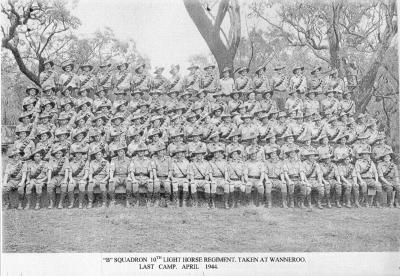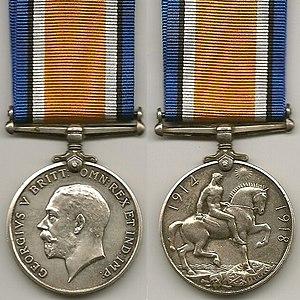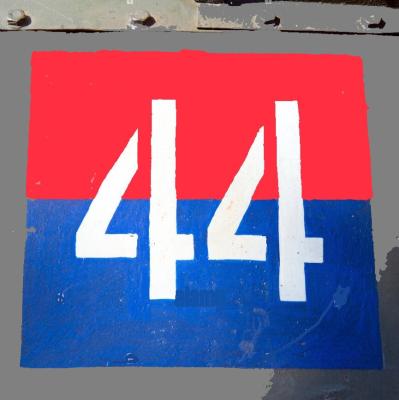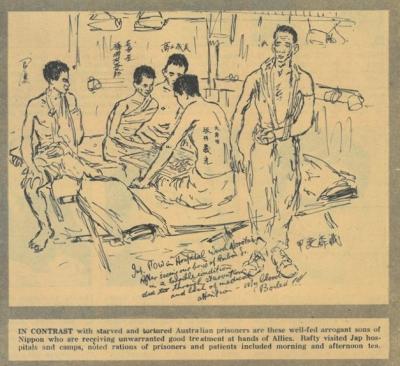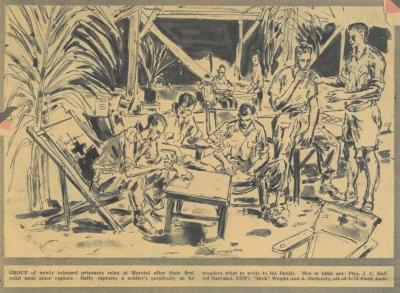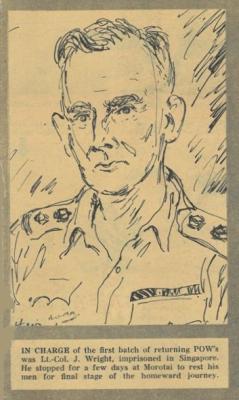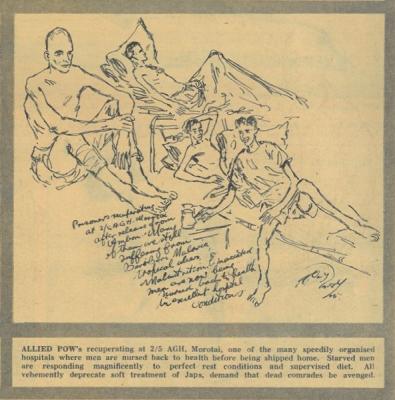Medals - World War 2 - Campaign Stars
For service in World War 2, a set of nine medals of a standard design in the shape of six-pointed stars was approved to mark service in a range of operations or theatres. The obverse has a central design of the Royal Cypher "GRI VI", surmounted by a crown. A circlet, the top of which is covered by the crown, surrounds the cypher and is inscribed with the name of the star. The reverse is plain except for Australian medals which are impressed with the number and name of the recipient.
The ribbons were 32 millimetres wide in colours alluding to the theatre of operations. The ribbons for these World War 2 campaign stars, with the exception of the Arctic Star, were devised by King George VI.
The set of nine campaign stars was designed by the Royal Mint engravers. The stars all have a ring suspender that passes through an eyelet formed above the uppermost point of the star. They are six–pointed stars, struck in yellow copper zinc alloy to fit into a 44 millimetres diameter circle, with a maximum width of 38 millimetres and 50 millimetres high from the bottom point of the star to the top of the eyelet.
On 8 July 1943, the 1939–43 Star (later named the 1939–1945 Star) and the Africa Star became the first two campaign stars instituted, and by May 1945 a total of eight stars and nine clasps had been established by the United Kingdom to reward campaign service during the Second World War. One more campaign star, the Arctic Star, and one more clasp, the Bomber Command Clasp, were added in 2013.
Including the Arctic Star and the Bomber Command clasp, no-one could be awarded more than six campaign stars, with five of the ten clasps awarded denoting service that would have qualified for a second star. Only one clasp could be worn on any one campaign star. The maximum of six possible stars are the following:
• The 1939–1945 Star with, when awarded, either the Battle of Britain or the Bomber Command clasp.
• Only one of the Atlantic Star, Air Crew Europe Star or France and Germany Star. Those earning more than one received the first qualified for, with the second denoted by the appropriate ribbon clasp.
• The Arctic Star.
• The Africa Star with, if awarded, the first earned of clasps for North Africa 1942–43, 8th Army or 1st Army.
• Either the Pacific Star or Burma Star. Those earning both received the first qualified for, with the appropriate clasp to represent the second.
• The Italy Star.
All recipients of campaign stars also received the War Medal.
Details
Details
The clasps, designed to be sewn onto the medal's ribbon, was struck in yellow copper zinc alloy and has a frame with an inside edge that resembles the perforated edge of a postage stamp. When medals are not worn, a silver rosette is worn on the ribbon bar to denote the award of the clasp.
The order of wear of the Second World War campaign stars was determined by their respective campaign start dates and by the campaign's duration. This is the order worn, even when a recipient qualified for them in a different order. The Defence Medal and War Medal are worn after the stars. with other Commonwealth war medals worn after the War Medal.
• The 1939–1945 Star, from 3 September 1939 to 2 September 1945, the full duration of the Second World War.
• The Atlantic Star, from 3 September 1939 to 8 May 1945, the duration of the Battle of the Atlantic and the War in Europe.
• The Arctic Star, from 3 September 1939 to 8 May 1945, the duration of the Arctic Convoys and the War in Europe.
• The Air Crew Europe Star, from 3 September 1939 to 5 June 1944, the period until D-Day minus one.
• The Africa Star, from 10 June 1940 to 12 May 1943, the duration of the North African Campaign.
• The Pacific Star, from 8 December 1941 to 2 September 1945, the duration of the Pacific War.
• The Burma Star, from 11 December 1941 to 2 September 1945, the duration of the Burma Campaign.
• The Italy Star, from 11 June 1943 to 8 May 1945, the duration of the Italian Campaign.
• The France and Germany Star, from 6 June 1944 to 8 May 1945, the duration of the North-West Europe Campaign.
• The Defence Medal, from 3 September 1939 to 8 May 1945 (2 September 1945 for those serving in the Far East and the Pacific),[28] the duration of the Second World War.
• The War Medal, from 3 September 1939 to 2 September 1945, the full duration of the Second World War.
Medals are displayed in context throughout the Museum. All medals are identified, archivally stored and those not on display are accessible and viewable with prior notice.
Australian Army Museum of Western Australia
Australian Army Museum of Western Australia
Other items from Australian Army Museum of Western Australia
- HAT, Khaki Fur Felt - Slouch Hat
- World War 2, Australia, Western Australia Wanneroo, B Squadron, 10 Light Horse, 1944
- Medal - British War Medal
- Medal - Companion of the Most Distinguished Order of St Michael and St George (CMG)
- Military Vehicle Signage - Unit Designator - Artillery World War 2
- World War 2, South West Pacific Theatre, Singapore, Prisoner of War Release, 1945
- World War 2, South West Pacific Theatre, Morotai, Prisoner of War Release, 1945
- World War 2, South West Pacific Theatre, Morotai, NX12233 WRIGHT DFC, 2/15 Field Regiment, Prisoner of War Release, 1945
- Artillery Pattern Wheel
- World War 2, South West Pacific Theatre, Morotai, 2/5 Australian General Hospital, Prisoner of War Release, 1945
- World War 2, South West Pacific Theatre, Townsville, Prisoner of War Release, 1945
- Medal - 1914-15 Star
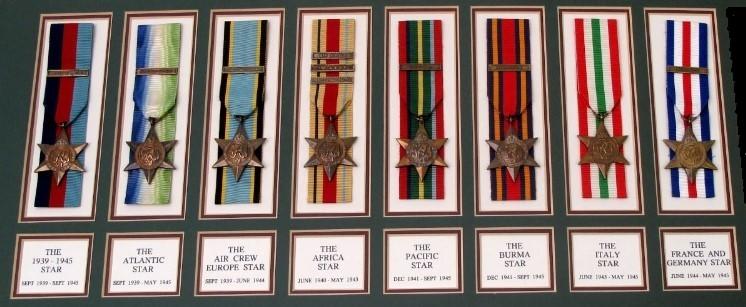
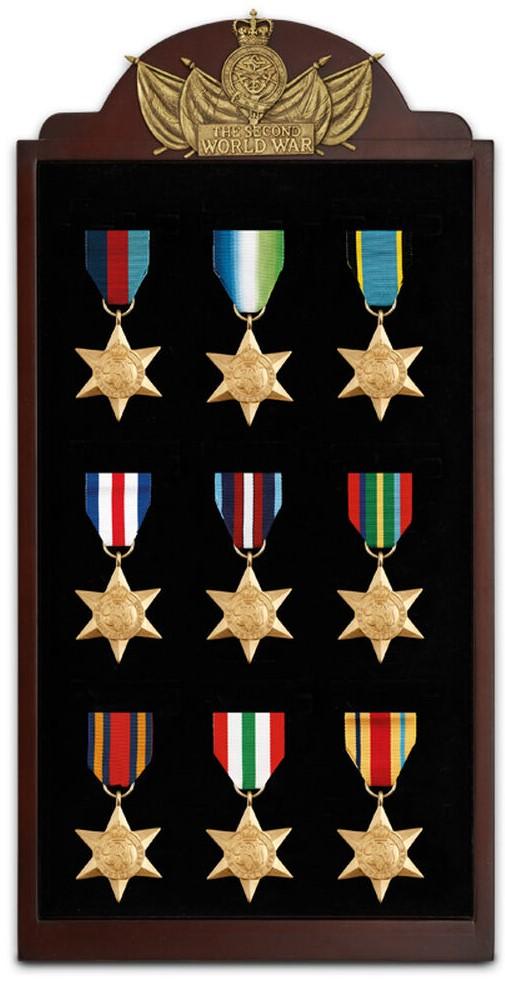
Scan this QR code to open this page on your phone ->


